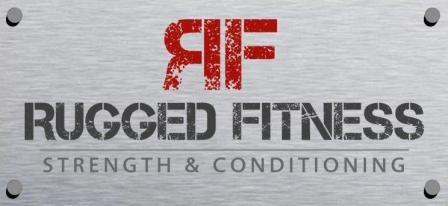Are You Gettin' Enough Protein Bro?
by Rugged Coaches on 04/03/15
Contributed by Coach Adel
Much like determining appropriate use of the term “bro”, the amount of protein someone should consumes during the course of a day is an extremely debated and studied topic. For the sake of this discussion, I want to discuss the recommended amount of protein consumption based on an individual’s sex, age, activity level and desired weight outcomes. I will give a quick overview based on the current research and recommendation on protein use based on scientific research. In addition to these recommendations I will give my personal take on the role of protein supplements or other powdered “Meal” shakes can play in your diet. In the course of my education and experience selling supplements I have had the amazing opportunity to get paid to study, learn and experiment with various supplements. A lot of this time was spent researching the benefits, side effects, of various types and most importantly the taste of various sources of protein. With new changes to your diet or activity its best to consult your physician before starting any new supplements or training.
Current Guidelines
The joint position of the American College of Sports Medicine (ACSM) and Academy of Dietetics and Nutrition when it comes to the distribution of daily caloric intake:
•Carbohydrate 50-60% * 6-10 g/kg/bw/day
•Fat <30% total kcal/day * Less than 10% from saturated fat
•Protein – 15-20%
?1.2 – 1.4 g/kg/bw/day for male or female endurance athletes
?1.6 – 1.7 g/kg/bw/day for male or female strength athletes
?RDA 0.8 - 1.0 g/kg/bw/day
Bro, what does that mean? Simply put these recommendations give you a formula to determine a range of protein that would be acceptable for you.
Example A: An 80kg (80kg x2.2lbs= 176lbs) bro/lady who primarily runs is recommended to consume between 96 grams of protein to 112grams.
Example B: An 80kg bro/lady who primarily trains with weights and does some kettlebells, is recommended to consume between 128grams to 136grams.
Example C: An 80kg bro/lady who primarily walks and is not overly active, allocation is based on the recommended daily allowance (RDA), say they should consume in the ball park of 64 to 80 grams of protein.
Note for those watching their calories, 1 gram of protein = 4 kcal.
Effectiveness of Protein Supplementation based on Scientific Research
The effectiveness of protein supplementation in helping improve muscular recovery post exercises is extremely well documented and studied. A quick search of the literatures provides some compelling reasons why one should consume a high protein shake or bar post exercises. One review by Cermak et al. looked 22 randomized control trails, which had a total of 680 subjects. Protein supplementation showed a positive effect increasing fat free mass (FFM ) and 1-RM leg press compared with a placebo after prolonged resistance-type exercise training in younger and older subjects. Another review sponsored by the Military Nutrition Division, US Army Research Institute of Environmental Medicine (USARIEM), found results supporting some of the desired benefits of protein use but also demonstrating the need for further research. “Overwhelmingly, studies have consistently demonstrated the acute benefits of protein supplementation on post-exercise muscle anabolism, which, in theory, may facilitate the recovery of muscle function and performance… not, resulted in measureable reductions in muscle damage and enhanced recovery of muscle function”. In English, we have a lot of evidence suggesting that protein helps, but sometimes we find out it doesn’t or it doesn’t do it as well as we had hoped or expected.
Pasiakos SM1, Lieberman HR, McLellan TM. Effects of protein supplements on muscle damage, soreness and recovery of muscle function and physical performance: a systematic review. Sports Med. 2014 May;44(5):655-70. doi: 10.1007/s40279-013-0137-7.
Cermak NM, Res PT, de Groot LC, Saris WH, van Loon LJ. Protein supplementation augments the adaptive response of skeletal muscle to resistance-type exercise training: a meta-analysis. Am J Clin Nutr. 2012;96:1454–64. doi: 10.3945/ajcn.112.037556.
This Bro's Opinion
In my personal experience and training history protein shakes and others supplements has been an effective tool for curbing cravings, adding protein to my diet on the go, and improving recovery. From a hunger sensation perspective drinking one 12-16 oz. protein shake has several benefits; it fills your stomach and takes advantage of the “volume effect”: simply put you consume a large amount of lower caloric foods that will hopefully keep you from munching on higher caloric options. Don’t believe me? No problem try drinking a 16 oz. protein shake when you feel the urge to snack on something, finish the whole shake and then reevaluate how “hungry” you still are.
If you are on the move and can’t sit down to eat, or don’t have the time to prepare a meal with adequate amounts of protein, a shake or bar is a great option. Portable, resalable and for the most part don’t require refrigeration. Typical shake has about 22-25 grams of protein per serving, that’s about one skinless chicken breast or an average sized can of tuna.
Though my opinion is shaped from anecdotal insight, as it is based on research I find that protein consumption with a short period of time post exercises helps recovery. Most of my clients and athletes agree and most carry a tub or pack of protein bars with them in their car.
Okay so what protein supplements do I recommend?
There is an abundance of protein bars, and powders to choose from. They come in every imaginable flavor and from various sources. Which one you consume is really up you and your dietary, ethical, religious choices and taste buds. Here is a quick synapse of my experiences with various types:
|
Protein Source |
Pros |
Cons |
|
Whey *isolate= more protein and less lactose per weight * concentrated= less protein, cheaper, and may have more lactose |
· Its relatively cheap (except the grass fed stuff, which is tastes better but also pricy) · Mixes well · Comes in hundreds of flavors or unflavored · Fast dissolving
|
· Could have some Lactose · Comes from animal products (milk) · Some allergic considerations
|
|
Casein |
· Its relatively cheap · Mixes well · Comes in many flavors or unflavored · Slow digesting
|
· Could have some Lactose · Comes from animal products (milk) · Some allergic considerations
|
|
Vegetable Sources Pea, Rice, Hemp, , and or mixes of various vegetables and grains |
· Typically have greater vitamin and mineral content then milk based products · Work with those who have religious or other dietary restrictions |
· Typically more expensive per serving then milk based proteins · Can have unpleasant after taste · Harder to mix · May not be a complete protein (has all amino acids) |
Tips when shopping:
· Look for the amino profile if you want to compare proteins, you don’t need to know each and everyone but look for higher amounts BCAA(Branch Chain Amino Acids): leucine, isoleucine and valine
· L-glutamine which is another amino acid believed to be especially helpful with recovery
· Watch out for fillers , artificial sweeteners and or other crap that manufactures sneak into their products
· Be careful of labels that can be misleading, pay attention to how many grams of protein come per serving: Example : 22 grams of protein per serving of 25 grams, or 26 grams of protein in 40 grams serving. A lot of manufactures will print highly misleading labels to confuse you.




